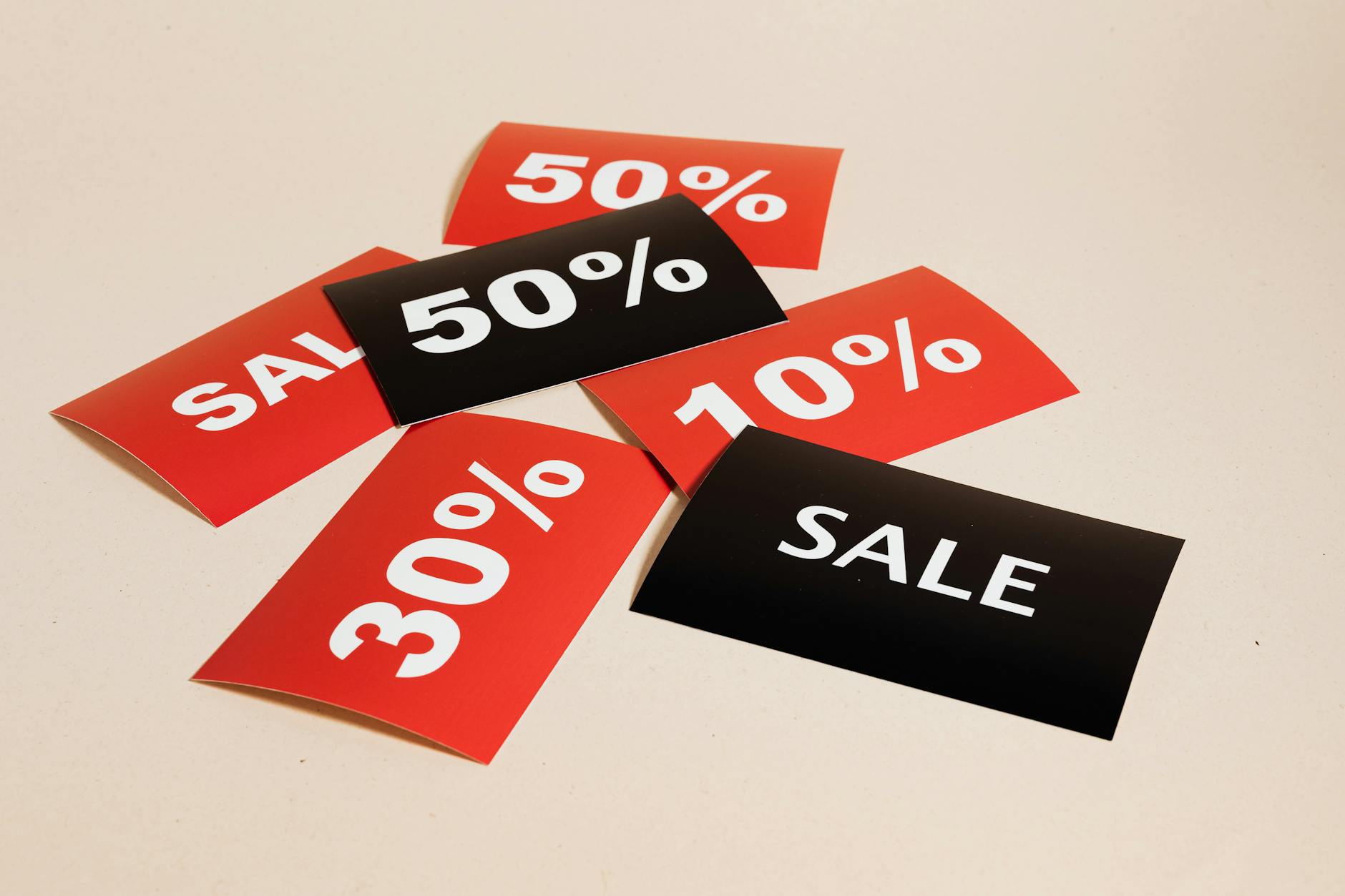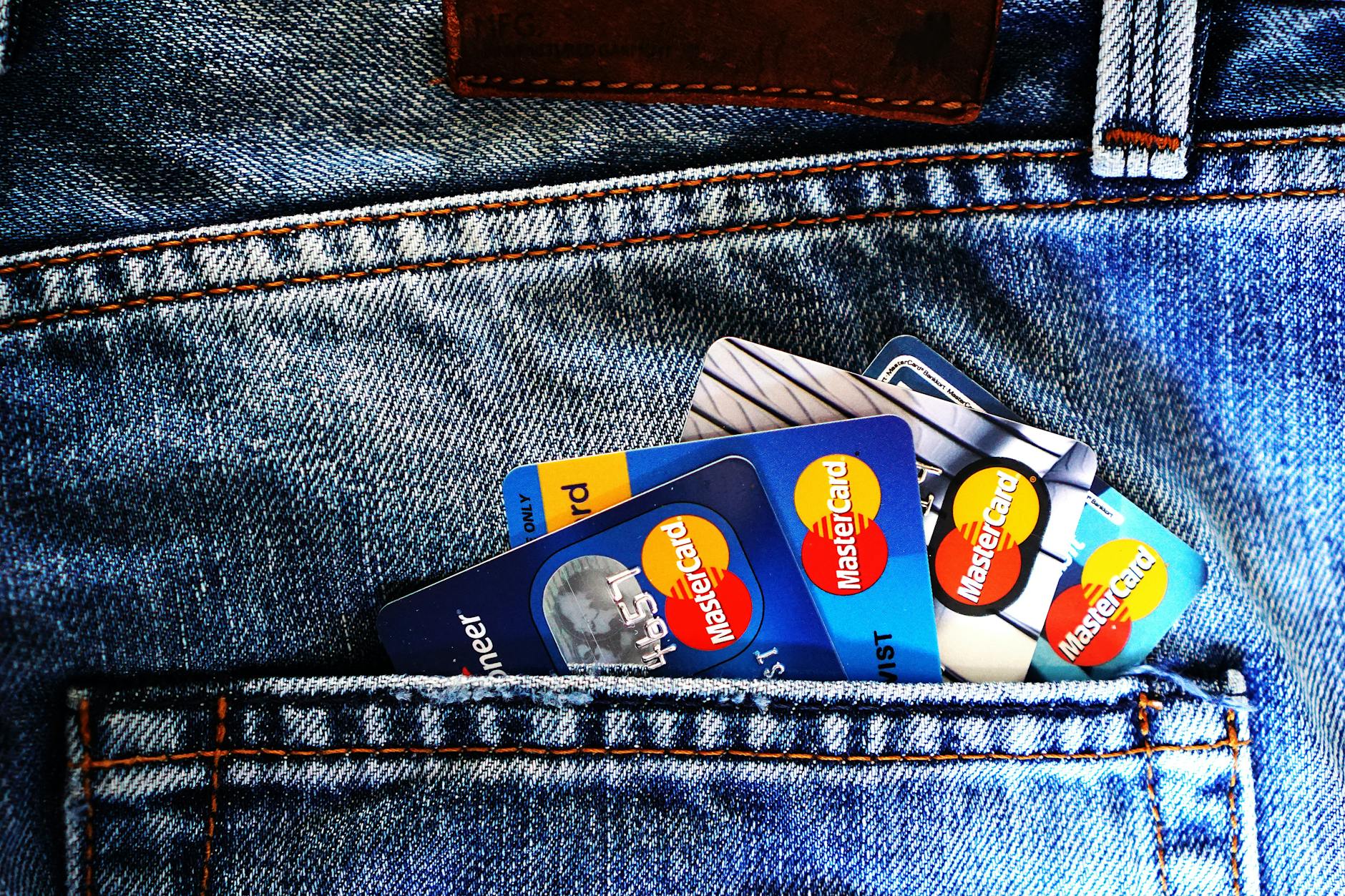Signs You Might Be Using the Wrong Credit Card: Are You Missing Out?
Signs You Might Be Using the Wrong Credit Card: Are You Missing Out?
Many people rely on credit cards for convenience, rewards, and security. However, not all cards are created equal, and choosing the wrong one can lead to missed benefits and unnecessary fees. Are you wondering if you might be using the wrong credit card?
In this post, we’ll highlight key signs to look for that indicate your current card may not be the best fit. From soaring interest rates to not maximizing rewards, recognizing these signs can help you make smarter financial decisions. By the end, you’ll understand what to watch for and how to find the right card that aligns with your spending habits. Your wallet deserves it.
You're Not Earning Rewards Efficiently
Using a credit card should come with benefits, but if you're not maximizing the rewards, you may feel like you're throwing money away. Spotting the signs of inefficient reward use can help you switch to a card that better meets your needs.
Understanding Credit Card Rewards Programs
Credit card rewards programs come in various forms, each designed to cater to different spending habits. The choice you make can have a significant impact on the value you receive. Here are the primary types of rewards programs:
-
Cashback: This program offers a percentage of your purchases back in cash. For instance, if your card rewards 2% cashback, spending $1,000 would earn you $20 in rebates. This method is straightforward, making it ideal for regular consumers.
-
Travel Points: These programs allow you to earn points for spending, which can later be redeemed for travel perks like flights, hotel stays, or car rentals. The value of points can fluctuate based on travel demand and time of booking. Some notable travel cards include the Chase Sapphire Reserve.
-
Miles: Similar to travel points but often specified to airlines, these can be redeemed for flights and upgrades. Programs vary by airline, offering unique bonuses such as partner contributions.
Get to know the specifics of your card’s rewards program by checking resources like Types Of Rewards Credit Cards and Cash Back vs. Travel Rewards: How to Choose.
Signs of Inefficient Reward Usage
You might be at risk of missing out on valuable benefits. Here are common indicators:
-
Not Meeting Spending Thresholds: Many rewards cards require you to hit minimum spending amounts to earn bonuses or tiers. If you're not actively tracking your spending, it’s easy to miss these thresholds.
-
Failing to Redeem Points: It’s not uncommon for cardholders to let points pile up. A survey revealed that nearly 70% of rewards credit cardholders have unused cash back, points, or miles sitting around (Survey: Credit Cardholders Sitting on Unused Rewards). Neglecting to utilize your rewards means a loss of potential savings.
-
Multiple Cards with Similar Benefits: If you have several cards sharing overlapping rewards, you could be diluting your potential. Focusing on the most beneficial card can streamline your points collection.
Keeping track of your credit card usage is crucial. Could you be letting rewards slip through your fingers? Take a moment to analyze your credit card strategy and make adjustments based on these signs.

Photo by Nataliya Vaitkevich
You're Sticking With Your Starter Card
Many consumers hold onto their first credit card longer than they should. Maybe it originated during college or as a way to establish credit. While starter cards offer a jumpstart, sticking with them can limit your financial potential. Recognizing the signs of when to upgrade is crucial for optimizing your finances.
Signs It's Time to Upgrade Your Card
You might wonder when it's time for a change. Here are some indicators that suggest you should consider a better card:
-
Life Changes: Have you recently experienced more spending needs? New jobs or family expansions often lead to increased financial activities.
-
Limited Rewards: Starter cards typically offer minimal rewards. Upgrading could unlock generous cashback or points for every dollar spent. For example, you could benefit from cards with enhanced rewards for groceries or gas.
-
Increased Interest Rates: If your current card has high-interest rates, you've got options. Usually, newer cards provide lower rates or even 0% introductory APR offers. Check out the 4 signs you should upgrade your credit card for more cues.
-
Better Offerings: Credit card companies continuously roll out promotions for new customers, such as bonus points and waived fees. These perks usually leave starter cards in the dust.
-
Improved Credit Score: If your credit score has surged since your first card, you qualify for more rewards. The old card may not be suitable anymore if your score has crossed a different tier.
Benefits of Upgrading to a Better Card
So, what’ll you gain by moving on? Upgrading your card comes with several advantages:
-
Lower Interest Rates: Cards designed for more educated consumers often have lower APRs. This change can save you money on unpaid balances.
-
Enhanced Rewards Programs: Many upgraded cards provide better rewards—they offer cashback, travel bonuses, or points for dining out. The financial benefits are more apparent when you use these cards for everyday purchases. Consider this article discussing potential upgrades.
-
Perks and Protections: Newer cards might come with added benefits such as travel insurance, purchase protection, or extended warranties.
-
Higher Credit Limits: As your financial needs grow, you might also need a higher credit limit. Upgrading can provide that flexibility.
By upgrading, you position yourself to maximize rewards and minimize costs. So ask yourself: Are you ready to make that shift for a better financial future?

Photo by Kaboompics.com
You're Using Store-Specific Credit Cards Unnecessarily
Store-specific credit cards may seem appealing, often touted for their enticing discounts and rewards. However, before diving into these offers, consider whether they serve your financial interests or could instead become a financial burden.
When Store Cards Become a Burden
Store-specific credit cards frequently come with limited use and high interest rates. Here’s why they might not be worth it:
-
Limited Usability: These cards are often only accepted at the issuing store, which restricts your purchasing power. If you receive a gift or attend a change of plans, you might find it difficult to use your card or earn rewards elsewhere.
-
High-Interest Rates: Average store credit card interest rates can be significantly higher than standard credit cards. Racking up debt can happen quickly, especially when dealing with an emergency.
-
Low Credit Limits: Many store cards start with lower credit limits, sometimes leading to increased credit utilization. This aspect can negatively impact your credit score.
-
High Fees for Inactivity: Some store credit cards charge annual fees or late fees, which are easy to incur if you forget or miss a payment.
The allure of immediate savings may blind you to the potential long-term costs. Knowing how to assess this type of card can save you from future financial headaches. For insight on the disadvantages of store credit cards, check out CNBC's overview on why to avoid them and Experian's breakdown of the pros and cons.
Evaluating Store Card Offers
To prevent financial pitfalls, it’s essential to have a clear strategy when assessing store-specific credit card offers. Here are key criteria to consider:
-
Interest Rates: What are the card's interest rates? High-interest rates can turn an early discount into long-term debt. Always compare them to rates from regular credit cards.
-
Rewards Structure: Are the rewards worth the costs? Compare the offers with rewards from general-purpose credit cards. A 5% discount on a purchase isn’t beneficial if you pay 20% in interest.
-
Fees: Look out for annual fees or other service charges. Some store cards might hit you with unexpected fees that void any discounts.
-
Credit Limit: Investigate the initial credit limit. A low limit could be a setup for potential penalties that affect your credit utilization ratio.
-
Other Offers: Are competitors offering better deals? Sometimes, general rewards cards offer better overall financial benefits.
By following these criteria, you can make educated decisions about whether a store credit card is a good fit for you. For more about assessing credit card offers, see Money Management International's guide or Business Insider's comprehensive evaluation.

Photo by Ivan Samkov
You're Frequently Rejected for New Cards
Being turned down for a credit card can feel discouraging. However, understanding the underlying reasons for these rejections can empower you to improve your creditworthiness and increase your chances of approval in the future.
Understanding Credit Inquiries and Score Impact
When you apply for a credit card, lenders conduct credit checks, which can be categorized as either hard inquiries or soft inquiries.
-
Hard Inquiries: These occur when you apply for credit, like a new credit card. Hard inquiries can lower your credit score by a few points. Multiple hard inquiries in a short period can further damage your score, influencing potential lenders' perceptions of your creditworthiness. It’s essential to limit your applications when your credit score needs improvement. You can learn more about hard inquiries here.
-
Soft Inquiries: These include checks conducted for pre-approval offers or when you check your own credit. Soft inquiries do not affect your credit score at all. They’re seen as a way for lenders to evaluate a consumer's credit without any application process involved. For more details on the differences, check out this overview on hard and soft inquiries.
Understanding these two types of inquiries can help you strategize your credit card applications and maintain a healthier credit score.
Recognizing Patterns of Rejection
Getting rejected is often a signal to pause and re-evaluate your financial status. Here are some common reasons for credit card application denials:
-
Low Credit Score: Many lenders have minimum credit score requirements. If your score falls below this threshold, your application may get denied. Consider utilizing resources on how to improve your score, such as this guide from NerdWallet.
-
Incomplete Credit History: Failure to establish a broad credit history can impact your chances of approval. Credit card issuers may see limited info as a potential risk. Investigate ways to build your credit history prudently.
-
High Credit Utilization: This ratio refers to the amount of credit you use compared to your total available credit. A hefty utilization might signal to lenders that you're financially strained, leading to rejection. Aim to keep your utilization below 30% of your total credit limits.
-
Insufficient Income: If card issuers see your income as lower than necessary to manage potential debt, they may deny your application. Always provide complete and accurate information about your income.
-
History of Late Payments: A pattern of late or missed payments raises red flags for lenders. Keeping your payment history clean is paramount. For more information, visit this helpful article on credit card application denials.
Addressing these factors will not only enhance your chances of getting approved but also improve your overall financial health.
You're Not Taking Advantage of Sign-Up Bonuses
Sign-up bonuses can be a fantastic way to gain extra rewards when you get a new credit card. Yet, many people fail to take full advantage of these perks. If you haven't unlocked the potential of sign-up bonuses, you may be leaving money on the table.
What Are Sign-Up Bonuses?
Sign-up bonuses typically provide new cardholders with rewards—such as points, cash back, or miles—after meeting specific criteria. Here’s how they usually work:
- Minimum Expenditure: Most cards require you to spend a certain amount within a specific time frame—often the first three months.
- Reward Structure: You might earn a one-time bonus, which could be a flat amount or a multiplier on specific categories like travel or dining. Some reputable sources like Chase and Capital One offer insights into typical sign-up offers.
Following these guidelines can lead to substantial rewards over time. When browsing potential credit cards, definitely consider these offers.
Signs You're Missing Out on Bonuses
You might not be getting the full benefit of your credit card if you see any of the following signs:
-
Infrequent Card Use: If you're using your credit card sporadically, you might be unaware of the bonuses you could earn from meeting spending thresholds. Regular transactions would boost your chances of reaching those bonuses. Consider checking articles like Missing Out on Top Credit Card Rewards? for thoughts on leveraging your card usage.
-
Not Meeting Spending Limits: Many users fail to keep track of their spending in relation to bonus requirements. Consider an app or a tracker to help manage your expenses effectively. Addressing this oversight can significantly improve your rewards. Want more on this? Explore signs you’re missing out on your card’s benefits in a post from Yahoo.
Overall, sign-up bonuses could be your ticket to additional savings if utilized effectively. Recognizing where you're falling short can motivate you to adjust your credit habits. Stay alert—your next reward could be just around the corner!

Photo by Kaboompics.com
You're Paying High Interest Rates
High interest rates can significantly impact your financial health. When using credit cards, many consumers overlook how interest accumulates and chips away at their overall debt. Understanding the implications of high-interest credit cards can help you make informed decisions.
Why High Interest Rates Matter
High interest rates mean your debt can snowball quickly. For instance, if you carry a balance of $5,000 on a card with a 20% APR, you're looking at approximately $1,000 in interest within a year, assuming no additional purchases and only minimum payments. Here’s how interest accrues:
- Compound Interest: Most credit cards use compound interest, which means you're charged interest on previously accumulated interest. This can lead to a relentless cycle of debt.
- Minimum Payments: Only paying the minimum won’t significantly reduce your balance. Instead, a large portion of the payment goes towards interest, extending how long you'll carry that debt.
- Long-Term Effects: Continuing to incur high interest can lower your credit score and lead to financial strain. According to Bankrate, even small interest changes can greatly affect how much you owe over time.
Understanding these factors reinforces why keeping an eye on interest rates is essential for maintaining your financial stability.
Identifying If You're in a High-Interest Card Trap
Are you uncertain if your credit card habits are leading you into expensive territory? Here are some signs to look for:
- Only Making Minimum Payments: If your monthly payment barely covers interest charges, it's time to assess your card’s rate. Continuing this habit will lead you to pay way more than the original amount borrowed.
- Rising Debt Balances: If your credit card balance isn't decreasing or is increasing, you're likely in a high-interest trap. Keeping track of your balance is key to avoiding this pitfall.
- Frequent Balance Transfers: Relying on balance transfers may hint at existing debt mismanagement. Constantly moving debt to avoid high payments may push you further into debt if not approached wisely.
Identifying these patterns can steer you towards making necessary changes in your credit card strategy.

Photo by Kaboompics.com
You're Ignoring Annual Fees
Many consumers overlook the significance of annual fees on credit cards. These fees can impact your overall financial strategy. It's important to understand when paying an annual fee could actually save you money or enhance your rewards.
When Annual Fees Are Worth It
It's not all doom and gloom when it comes to annual fees. In some cases, the benefits can outweigh the costs. Here’s how to identify those situations:
-
Enhanced Rewards: If your card provides lucrative points or cashback that exceeds the annual fee, it's likely a wise choice. For instance, a card that gives 3% cashback on categories you frequently shop in can easily offset a $95 annual fee.
-
Travel Perks: Many travel rewards cards offer benefits like free checked bags, priority boarding, or lounge access. If you travel often, these benefits can far exceed the annual fee. Imagine saving $50 per flight on luggage fees—that quickly adds up!
-
Sign-Up Bonuses: Some cards with fees offer massive sign-up bonuses, such as 50,000 points after spending a specific amount within the first few months. If utilizing this bonus offsets the annual fee, it may be worth considering.
-
Credit Building Opportunities: If you're trying to build credit, a card with an annual fee may provide higher limits or better terms. This can set you on a path to improve your credit score.
Be cautious; before committing, you should evaluate whether the actual benefits line up with your cardholder habits. Discover more about this topic in Is It Worth Paying an Annual Fee for a Credit Card?.

Photo by RDNE Stock project
Signs You're Overpaying in Fees
Many holders of credit cards don’t fully realize when they’re overpaying. Here are clear signs that you may be spending too much on your card:
-
Underutilizing Rewards: Are you missing out on your card’s potential? If you’re paying an annual fee yet not using your card enough to earn rewards or points, that’s a significant red flag.
-
Failing to Reach Minimums: Many cards require you to spend a certain amount each month. If your spending habits don’t align with these requirements and you pay a hefty annual fee, consider looking for a card that matches your financial behaviors better.
-
Multiple Cards with High Fees: If you possess several cards with annual fees but find that your rewards are duplicative or worthless, it might be time to consolidate. One solid card with optimal perks may serve you better than several less effective cards.
By keeping these factors in check, you'll avoid letting unnecessary fees drain your resources. Learn more about identifying excess costs in your bills here.
You're Not Monitoring Your Credit Utilization
It's easy to overlook your credit utilization. But ignoring it can lead to serious financial consequences. Your credit utilization ratio—how much you owe compared to your total credit limit—plays a significant role in your credit score. A higher ratio may suggest financial strain, potentially impacting your ability to secure loans with favorable rates.
Understanding Credit Utilization Ratios
Credit utilization is defined as the percentage of your available credit that you're currently using. For example, if your total credit limit is $10,000 and your current balance across all cards is $3,000, your credit utilization ratio is 30%. Financial experts recommend keeping this ratio below 30% to maintain a healthy credit score (What Is Credit Utilization Ratio?). This measurement reflects your credit management habits. A low ratio indicates responsible use of credit, while a high ratio may suggest difficulty managing debts.
Monitoring this ratio is crucial because it influences your credit score significantly. Most scoring models—like FICO—view high utilization ratios as a red flag. Imagine it as a scale; the more debt weighs you down relative to your credit limits, the less favorable your financial picture appears to lenders. You can learn more about it from sources like Experian.
How to Manage Your Utilization Effectively
Managing your credit utilization doesn’t have to be complicated. Here are straightforward tips to help keep it in check:
-
Pay Down Balances Early: If you can, pay off your credit card purchases soon after you make them. This keeps your balances low and avoids interest accumulation.
-
Request a Credit Limit Increase: If you have a good payment history, ask your credit card issuer to raise your credit limit. A higher limit lowers your utilization ratio, provided your spending doesn't increase dramatically.
-
Spread Your Spending: Rather than charging everything to one card, distribute expenses across multiple cards. This way, no single card's balance becomes too high.
-
Set Up Alerts: Use account alerts to track your spending. Notifying you when you're nearing a set spending limit can help keep your utilization manageable. You can find recommendations for tools in articles like 5 Tips for Lowering Your Credit Utilization.
-
Monitor Your Statements: Regularly check your credit card statements to stay aware of your balances. Apps can help simplify tracking and set reminders for payments.
-
Create a Budget: Building a budget enables you to manage your spending better. With more awareness of your financial habits, maintaining a low utilization ratio is easier.
Being proactive about your credit utilization can aid not just your score but overall financial health. To learn more tips on keeping your utilization low, refer to posts like How to Improve Credit Utilization.

Photo by Nataliya Vaitkevich
You're Missing Payments or Paying Late
Missing payments or consistently paying late can damage your financial health in ways you may not realize. These habits can impact your credit score, increase your debt, and lead to unnecessary fees. Understanding the consequences and implementing strategies to stay on track is essential for healthy credit management.
Impact of Late Payments on Your Credit Score
Late payments can create a significant dent in your credit score. Here’s what happens when you miss a payment:
-
Initial Grace Period: A payment that is just a few days late typically won't hit your credit report right away. However, after about 30 days, creditors report late payments to credit bureaus, impacting your credit history. This can lower your credit score, affecting future loan applications or credit offerings.
-
Duration on Record: Once recorded, a late payment can linger in your credit report for up to seven years. The longer the delinquency, the more it affects your credit score. Timely payments help build a positive credit history, while late payments do the opposite.
-
Increased Interest Rates: Higher interest rates may follow after a late payment. Lenders often view missed payments as a higher risk, leading to less favorable credit terms in the future. Consider how this could financially hinder you when applying for loans or new credit.
The details and timelines surrounding late payments can be found on Experian's blog.
Strategies to Avoid Missing Payments
Staying on top of your payments is crucial. Here are some practical tips to help you avoid late payments:
-
Set Up Reminders: Use your smartphone’s calendar or a budgeting app to remind you of due dates. These notifications can serve as helpful nudges when bills are approaching.
-
Automate Payments: Enabling automated payments for at least the minimum amount due can save you from missed deadlines. Just ensure you maintain sufficient funds in your account to prevent overdrafts.
-
Review Your Finances Regularly: Keeping a close eye on your financial situation can highlight when bills are approaching. Set aside time each month to check on your budget and adjust as necessary.
-
Prioritize Payments: If you're facing financial stress, determine which bills to pay first based on interest rates and importance. Credit card payments should often take precedence given the high-interest nature of this debt.
-
Contact Your Issuer: If you know you might miss a payment, contact your credit card issuer beforehand. They may offer a helpful grace period or assistance that can protect your credit score. You can read more about handling missed payments in this informative article on Bankrate.
By taking proactive steps, you can keep your payments on track and your credit score intact. Don't let missed payments hinder your financial progress.

Photo by Pixabay
Conclusion
Evaluating your credit card usage is crucial for optimizing your financial health. If you've noticed high-interest rates, inefficient rewards, or missed payments, it's time to reassess your choices. Consider whether your current card aligns with your spending habits and if its benefits truly outweigh any costs.
Taking a proactive approach now can lead to smarter financial decisions later. Ask yourself: Are you really maximizing your rewards, or are you simply maintaining the status quo? Reflecting on these questions can open doors to better credit options and increased savings. Don't leave money on the table—make your credit cards work for you.


